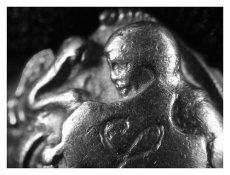cmo
Member
- Joined
- Aug 22, 2006
- Messages
- 1,321
- Format
- 35mm RF
Yesterday I used a bellows for some real macro photography for the first time. It's a good equipment: Olympus 3.5/50mm with a 25mm extension ring and an Olympus 4.0/80mm bellows head, attached with an adapter to a Canon EOS 1v. Since yesterday I admire the handiwork of macro photographers... OMG, this is difficult. It starts with the wind shaking the leaves, focussing is a nightmare even with a loupe, and DOF just doesn't exist, even at f22. I asked a friend and his recommendation to gain more DOF was "Stack several images"... of course he assumed I am using a digital camera. 'Stacking' means to combine several shots of the same image with different focus settings into one new digital image.
So, is there an "analog way" to get more DOF in macro photography?
So, is there an "analog way" to get more DOF in macro photography?















